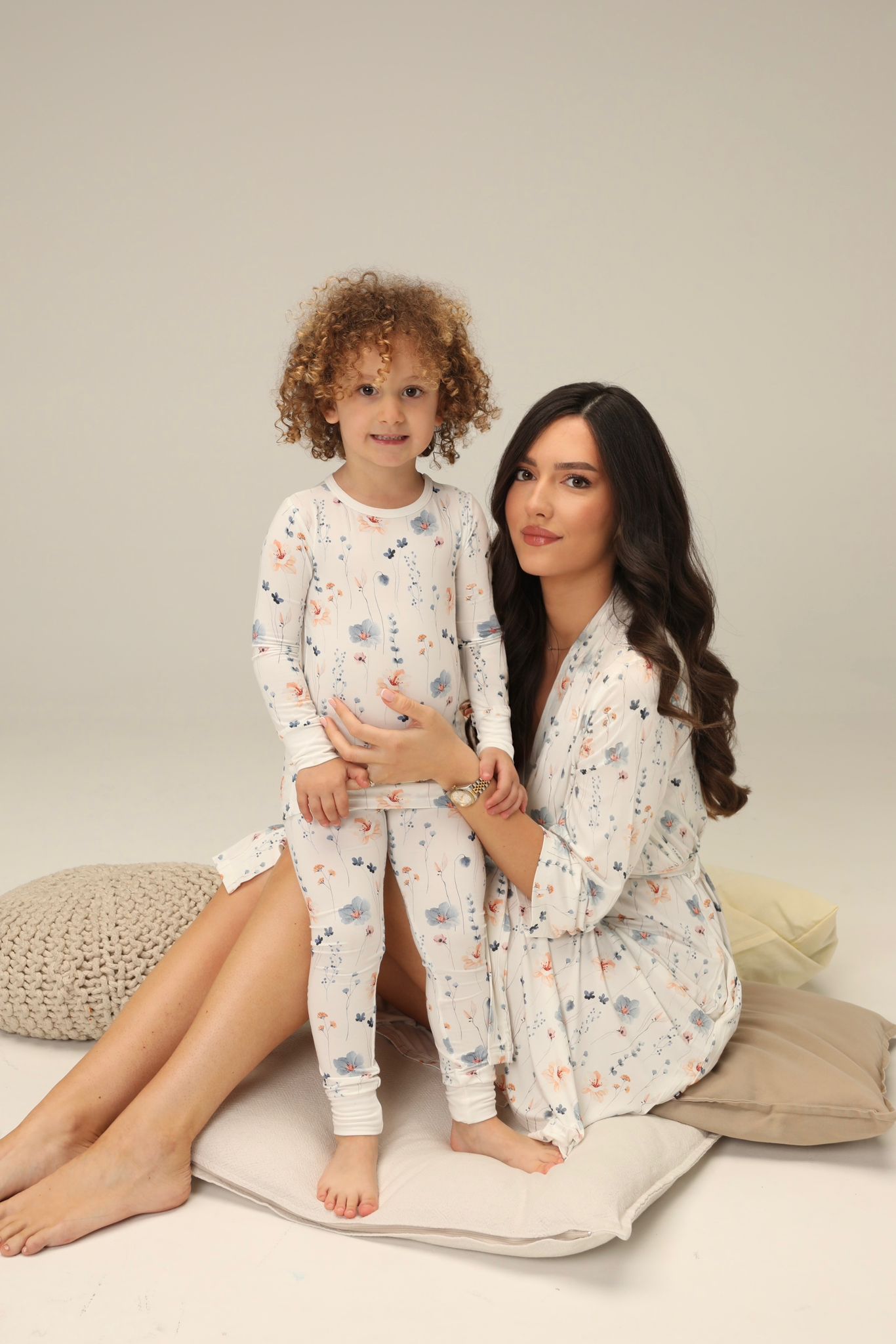MA-MA NYC is more than a NYC-based premium brand offering high-quality products for babies and moms; it's a heartfelt movement dedicated to making every mother feel acknowledged, appreciated, and empowered. Through our exceptional products and community-driven initiatives, we're building a supportive network that celebrates and uplifts moms everywhere, ensuring they feel valued and supported in their journey. We know that becoming a mom changes everything. It forges the way you see the world, the way you love, and the way you cherish every quiet moment. As a brand created for moms, we know that careful consideration and sincere emotion go into picking pieces that are gentle to your baby's skin and our planet. That's why we carefully handpick the best fabrics, ensuring every fiber and every stitch raises the bar for quality, softness, and sustainability.
At MA-MA NYC, we create sleepwear that embraces babies and their moms in comfort, confidence, and love. Crafted from luxuriously soft OEKO-TEX® certified bamboo and designed to nurture and support your family's welfare, our product line includes stylish and durable pieces such as baby footies, baby pajamas, and maternity robes. Our sleepwear is more than just pajamas – a cocoon of comfort that soothes and protects your little one, from sleepy bedtime routines to first morning snuggles. And for moms, our buttery-soft robes provide a gentle, breathable embrace, perfect for those first few days after bringing your baby into the world. Wrap yourself in high-quality robes to feel softness, support, and love while indulging in late-night cuddles and treasured moments of self-care.


